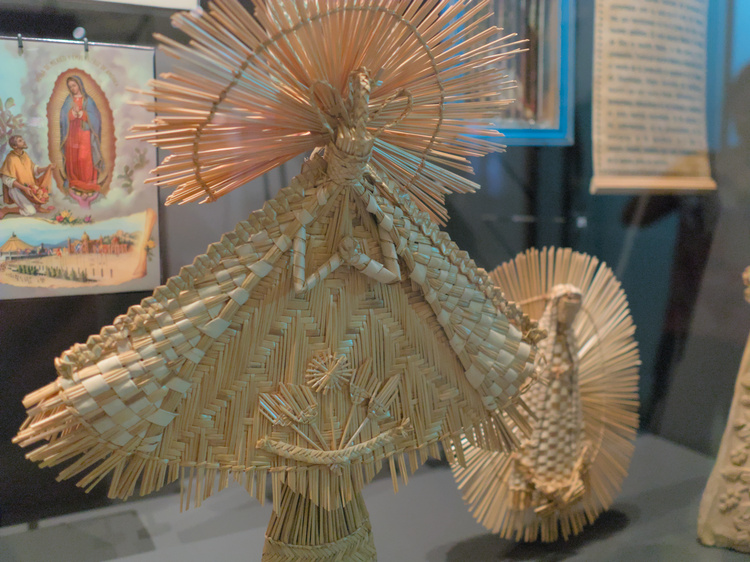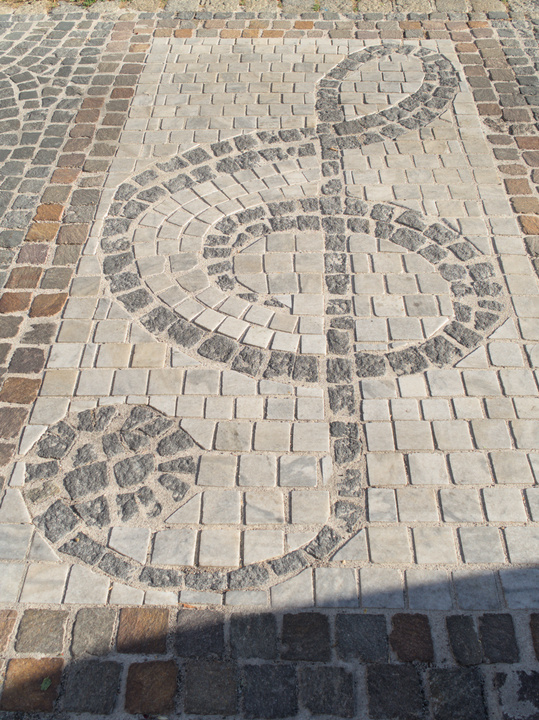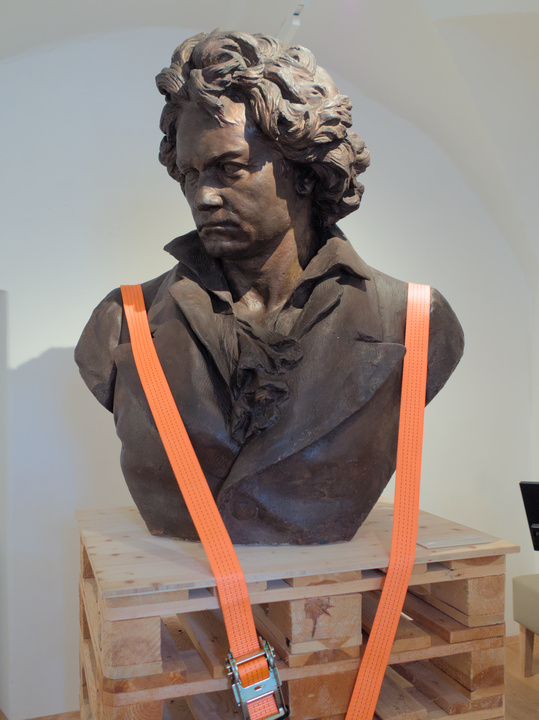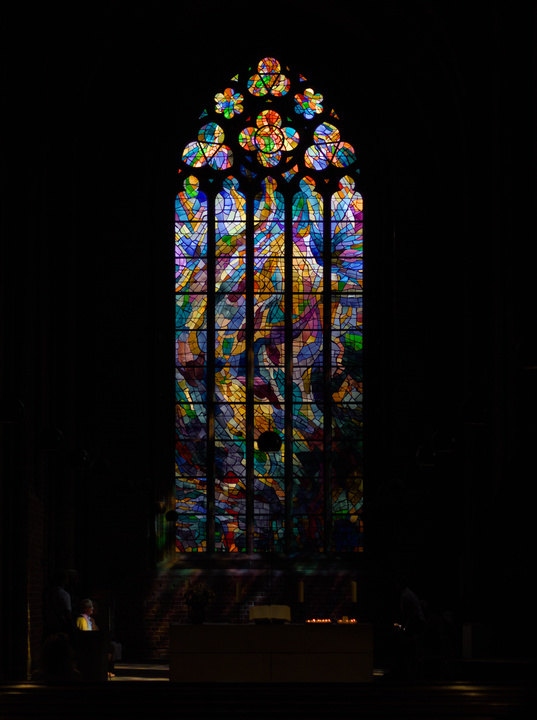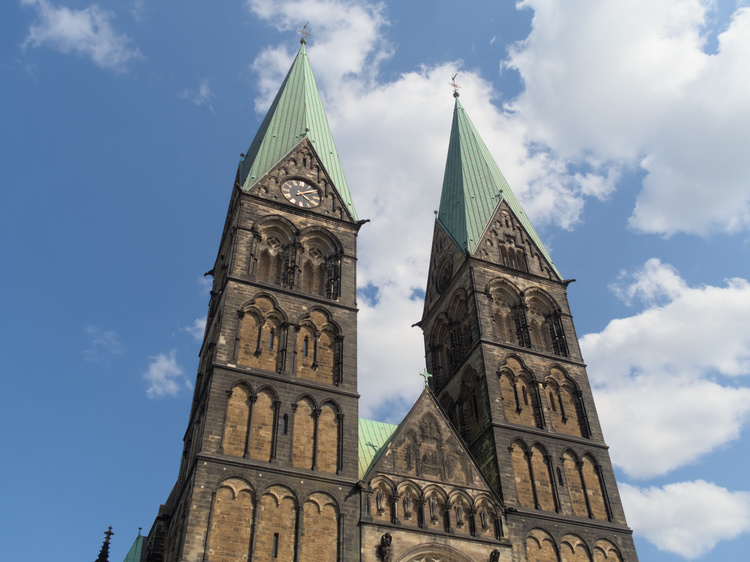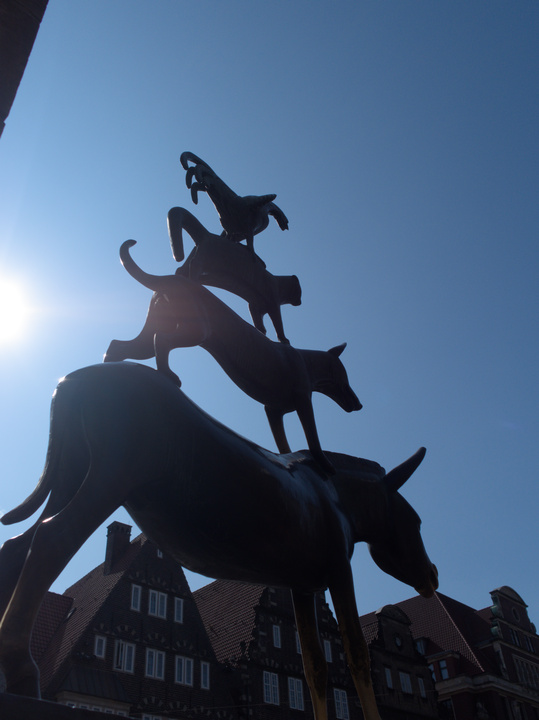Day 8: Toledo
As I mentioned on the end of the previous entry, we booked a tour for Toledo1. The tour started by entering the walls that protect the Old Town, walking through its narrow alleys.
Our first stop was Church of Santo Tomé, which is the current location of The Burial of the Count of Orgaz2, which was comissioned to El Greco3 especially for that Church.
Afterwards, we paid a visit to Synagogue of Santa María la Blanca4. Although it was originally a sinagogue, it was expropiated and turned into a church 211 years after its construction, which explains the catholic name.
The next stop was Monastery of San Juan de los Reyes5, which belongs to the Franciscan order. In the visit, we noticed that some of the walls were covered by a white layer that was removed. Since the guide didn’t mention that, Karen asked in the information desk and found out that the white layer was probably added as an effort to sanitize in plague times.
We finished the walking part of the tour crossing Puente de San Martín6 and returning to the shelter of the bus and its air conditioning.
The last stop of the tour was a lookout outside of the Old Town. On the way, the tour guide was commenting on how expensive the housing was around the area we were passing or talking trivia about military buildings, which only added to her the banal facts she shared on the whole tour, resulting in a 0/10 rating. Once we arrived to the lookout, I embraced the blazing sun to take a panoramic photo of the city.
Day 9: Vienna Zoo
Our host in our first lodging in Vienna gave us a quick explanation of the nearby places to visit, which earned him a 11/10 rating.
One of the reasons to stop by in Vienna was its zoo7. They published a book about preservation of pandas, starring the painting panda Yang Yang. Karen participated in the crowdfunding campaign, with her name in the donors section of the book.
In the panda section of the zoo, everyone was looking for Yang Yang, but it seemed that she was not available at that time.
We also ate Lángos8, an hungarian fried bread, which is served with garlic sauce.
Since one of the sections of the metro line we took from our lodging to the zoo was under repair, we had to take a bus connection. While we were doing the transfer, we watched the sunset outside the metro station.
Day 10: Vienna Central Cemetery
Another reason to come to Vienna was its Cemetery9, which has grave for several famous Austrian people, like Lugwig Bolztmann10, Hedy Lamarr11 and a lot of classical musicians.
At first, we tried to just walk to find the tombs we wanted, but we soon realized that the place was too big. We then returned to the entrance and we found the Information Room, where there is a computer for searching specific graves.
After visiting the musicians area, we visited Boltzmann’s grace, who is said to have decided to end his life because of the little recognition the scientific community gave to his works.
The next notable grave we visited was Hedy Lamarr’s, actress and inventor, who co-developed one of the precursor technologies to Bluetooth and Wifi.

A representation of Hedy Lamarr’s face. Her epitaph is “Films have a certain place in a certain time period. Technology is forever”.
Once we returned to downtown, we visited Torture Museum Vienna 12. The Museum is built inside a bunker and tells the history of torture and physical punishment methods. They also have an exhibition called “Torture Today” made by Amnesty International.
We then visited Time Travel Vienna13, which offers an interactive tour on Austrian history. We were lucky enough to get into the last function.
We finished the day by walking to Michaelerplatz, where Hofburg St. Michael’s wing is located with its many statues.
Day 11: Vienna Museums
In our last day on Vienna, we visited different museums, starting by the ones located in Hofburg 14. We started by the Weltmuseum (World Musem), which may be just a fancy name for Museum of Things Stolen Around the World.
We then visited the Weapons and Armor collection, hosted by the Art History Museum.
We finished our visit in the Musical Instruments collection.
Our last museum that day was Beethoven Museum 15. The building is a recreation of the house Beethoven lived in on the outskirts of Vienna to help with his health conditions. The exposition describes his life and works.
After the museums, we still had some time to burn before taking our bus, so we went to Stadtpark16.
Days 12 and 13: Dresden
After our stay in Vienna, we continued our trip in Germany. Our first stop was Dresden, where we visited Belén and Po-Ya.
After we arrived to Dresden, we visited the little memorial to Salvador Allende located in the neighborhood where Belén lived. We also had a little tour in the laboratory where Belén and Po-Ya work and we had tea and played Overcooked with them.
On the second day, we did a little tour on Dresden Old Town. Some of the attractions were under repairs, like the Fürstenzug mural. Several historic buildings still had signs of the bombing that the city received at the end of World War II. A great example is Frauenkirche (Church of Our Lady), a Lutheran temple from 18th century which had its rebuilding finished on 2005.
Day 14: Berlin
Our first stop was the Memorial to Murdered Jew of Europe17, which consists of 2711 concrete blocks and an underground museum which tell their stories. On the museum shop, the clerk asked us if we were from Chile, being the second person to guess right (after the person who sold us tickets for the tour to Toledo). That was a change from people asking if I was Italian.
The next stop was Topography of Terror18, where we learned about the history and rise of SS, the propaganda the Nazis used to expand their regime and how they were capable of dehumanize the groups they persecuted.
We bought some essentials before leaving Berlin, like some souvenirs and Ampelmänchen19 cookie cutters. Ampelmänchen is the distinctive silhouette in semaphores from Eastern Germany.
Day 15: Bremen
Our last stop in Germany was Bremen, the one and same from Town Musicians of Bremen. After getting of the bus, we walked to Bremen Central Station to put our luggage in lockers and walk without the extra weight.
Market Square has a lot of historic buildings, including some that have World Heritage status by UNESCO. Karen found resemblance with Hyrule Castle Town from Ocarina of Time.
We first visited the Church of Our Lady20, which has a lot of pretty stained glass windows. The other important temple was Bremen Cathedral, but is was sadly closed.
The weather that day was extremely hot, but luckily a soft drink brand was giving away iced tea. In our search for a place to lunch, we ended up eating near Bremen Art Gallery. On the way there, we walked by one of Hein Sinken moving sculptures.
We kept walking for a bit before dawn and then we returned to the station.
After taking back our luggage, we walked to the bus stop to finally leave Germany.





















